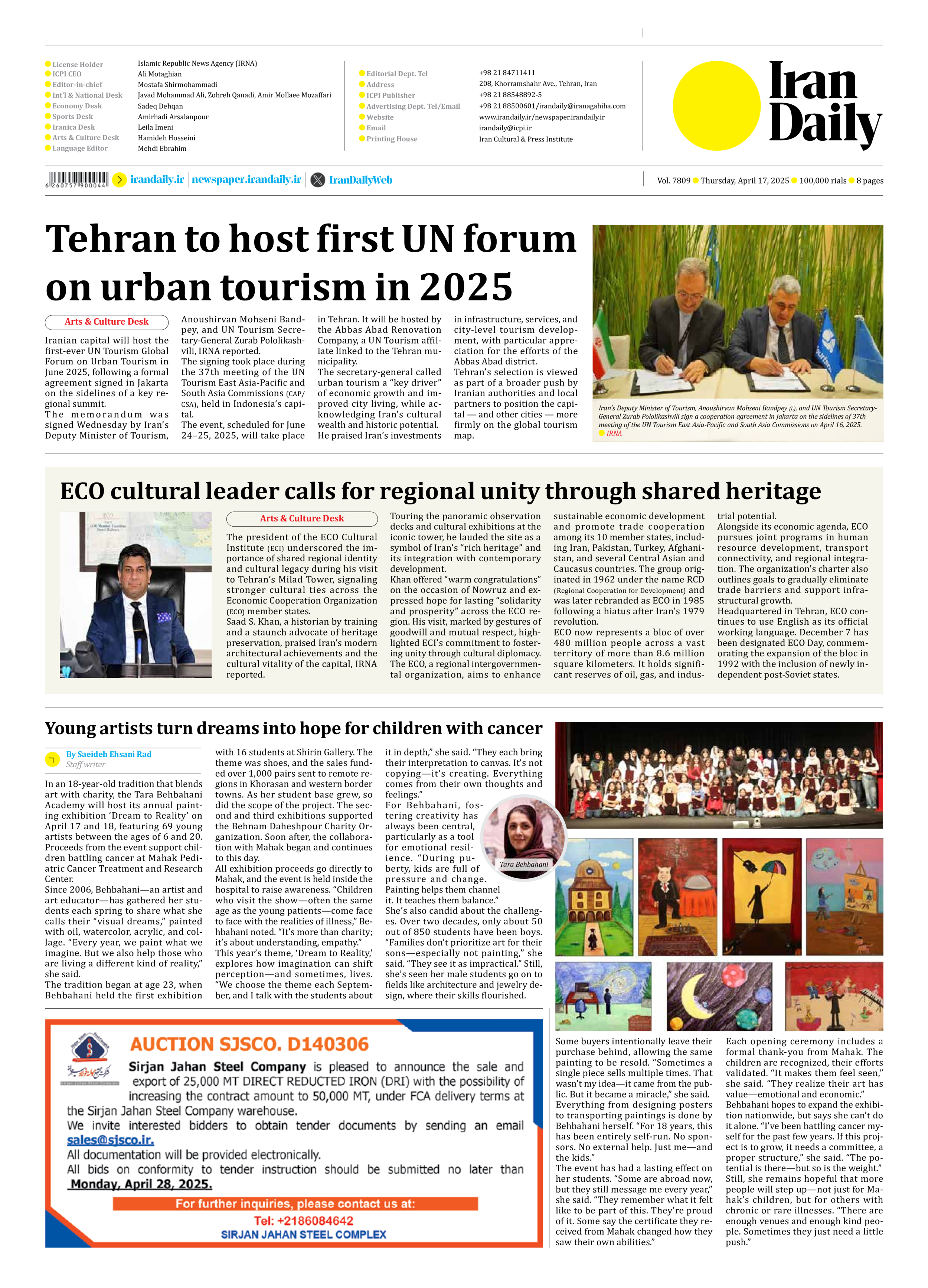
Young artists turn dreams into hope for children with cancer
By Saeideh Ehsani Rad
Staff writer
In an 18-year-old tradition that blends art with charity, the Tara Behbahani Academy will host its annual painting exhibition ‘Dream to Reality’ on April 17 and 18, featuring 69 young artists between the ages of 6 and 20. Proceeds from the event support children battling cancer at Mahak Pediatric Cancer Treatment and Research Center.
Since 2006, Behbahani—an artist and art educator—has gathered her students each spring to share what she calls their “visual dreams,” painted with oil, watercolor, acrylic, and collage. “Every year, we paint what we imagine. But we also help those who are living a different kind of reality,” she said.
The tradition began at age 23, when Behbahani held the first exhibition with 16 students at Shirin Gallery. The theme was shoes, and the sales funded over 1,000 pairs sent to remote regions in Khorasan and western border towns. As her student base grew, so did the scope of the project. The second and third exhibitions supported the Behnam Daheshpour Charity Organization. Soon after, the collaboration with Mahak began and continues to this day.
All exhibition proceeds go directly to Mahak, and the event is held inside the hospital to raise awareness. “Children who visit the show—often the same age as the young patients—come face to face with the realities of illness,” Behbahani noted. “It’s more than charity; it’s about understanding, empathy.”
This year’s theme, ‘Dream to Reality,’ explores how imagination can shift perception—and sometimes, lives. “We choose the theme each September, and I talk with the students about it in depth,” she said. “They each bring their interpretation to canvas. It’s not copying—it’s creating. Everything comes from their own thoughts and feelings.”
For Behbahani, fostering creativity has always been central, particularly as a tool for emotional resilience. “During puberty, kids are full of pressure and change. Painting helps them channel it. It teaches them balance.”
She’s also candid about the challenges. Over two decades, only about 50 out of 850 students have been boys. “Families don’t prioritize art for their sons—especially not painting,” she said. “They see it as impractical.” Still, she’s seen her male students go on to fields like architecture and jewelry design, where their skills flourished.
Some buyers intentionally leave their purchase behind, allowing the same painting to be resold. “Sometimes a single piece sells multiple times. That wasn’t my idea—it came from the public. But it became a miracle,” she said.
Everything from designing posters to transporting paintings is done by Behbahani herself. “For 18 years, this has been entirely self-run. No sponsors. No external help. Just me—and the kids.”
The event has had a lasting effect on her students. “Some are abroad now, but they still message me every year,” she said. “They remember what it felt like to be part of this. They’re proud of it. Some say the certificate they received from Mahak changed how they saw their own abilities.”
Each opening ceremony includes a formal thank-you from Mahak. The children are recognized, their efforts validated. “It makes them feel seen,” she said. “They realize their art has value—emotional and economic.”
Behbahani hopes to expand the exhibition nationwide, but says she can’t do it alone. “I’ve been battling cancer myself for the past few years. If this project is to grow, it needs a committee, a proper structure,” she said. “The potential is there—but so is the weight.”
Still, she remains hopeful that more people will step up—not just for Mahak’s children, but for others with chronic or rare illnesses. “There are enough venues and enough kind people. Sometimes they just need a little push.”







